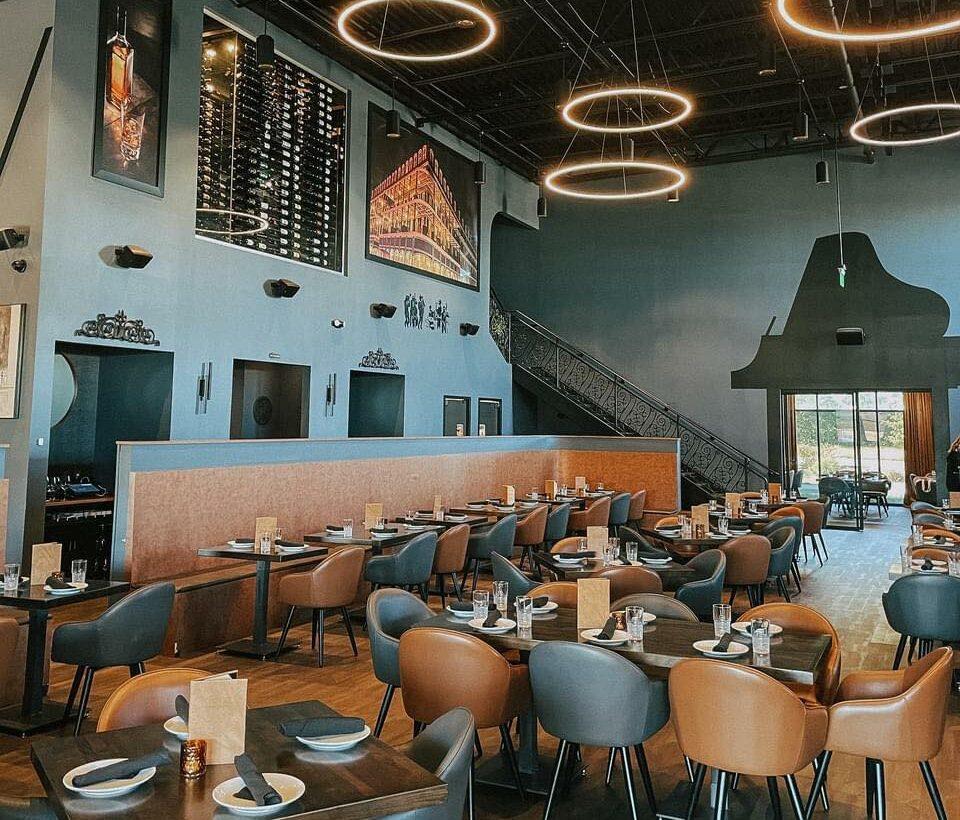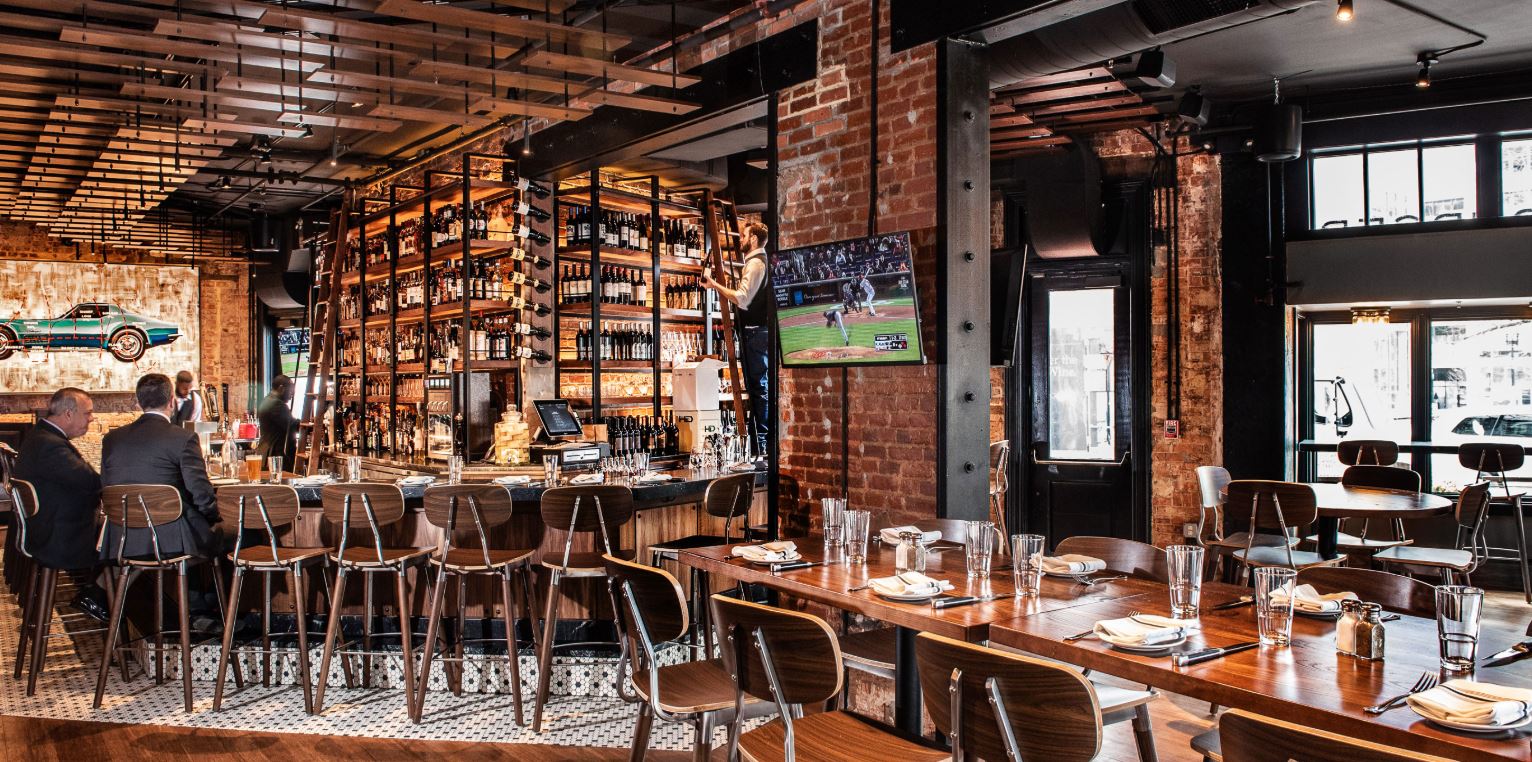Chinese Food Islamabad: Delight In Authentic Chinese Cuisine at its Best
Chinese Food Islamabad: Delight In Authentic Chinese Cuisine at its Best
Blog Article
Savor Genuine Eastern Cuisine With a Pan-Asian Twist for a Culinary Experience
Starting a cooking trip via genuine Asian food, enhanced with a Pan-Asian twist, provides an one-of-a-kind possibility to explore the rich tapestry of flavors that define the area's varied cooking traditions. This experience invites you to appreciate the elegant balance of tastes-- wonderful, salty, spicy, and sour-- integrated by fragrant herbs and spices. Think of the cutting-edge blend of Thai curry and ramen or the unanticipated joy of sushi burritos. As you ponder these enticing dishes, consider the cultural narratives and historic impacts that shape them, each bite providing a story waiting to be uncovered.

Checking Out Pan-Asian Flavors
In the world of global gastronomy, Pan-Asian food stands apart for its remarkable diversity and the unified interaction of tastes from numerous Oriental societies. This culinary strategy celebrates the rich practices and distinct ingredients located throughout the continent, creating a tapestry of preferences that is both satisfying and fascinating. Secret to Pan-Asian food is its ability to balance contrasting tastes-- pleasant, salted, spicy, and sour-- while highlighting the quality and quality of each ingredient.
From the umami-rich soy sauce of Japan to the fiery chili peppers of Thailand, Pan-Asian food supplies a considerable combination of flavors. These elements are often incorporated in creative ways, enhancing recipes with layers of complexity. For example, the usage of great smelling natural herbs such as lemongrass and cilantro, typical in Vietnamese and Thai food, includes a refreshing brightness to dishes, while the consolidation of coconut milk provides a velvety, rich structure.
The emphasis on fresh produce and fragrant seasonings ensures that each meal is not just a banquet for the palate yet additionally for the detects. Pan-Asian food invites diners to embark on a culinary journey, exploring the vast and varied landscapes of Asian gastronomy with every bite.
Blend Recipes to Try
While Pan-Asian cuisine is celebrated for its typical flavors, the modern cooking landscape is increasingly embracing combination recipes that blend these traditional components with impacts from various other areas. This ingenious method not just honors the abundant heritage of Oriental cookeries but also introduces novel taste experiences that appeal to contemporary tastes.
An archetype of such a blend recipe is the Korean-Mexican taco, where seasoned bulgogi beef is covered in a cozy tortilla, covered with kimchi and a hot gochujang-infused salsa. This combination weds the bold, tasty tastes of Korea with the vibrant, fresh components of Mexican food. In a similar way, sushi burritos have obtained appeal, amalgamating the delicate creativity of Japanese sushi with the passionate, hand-held comfort of a burrito, usually featuring combination ingredients like tempura shrimp and avocado with a drizzle of wasabi mayo.
An additional notable recipe is Thai curry ramen, which infuses the velvety, aromatic seasonings of Thai curry into the comforting broth of typical Japanese ramen, producing an unified blend that tantalizes the senses. These fusion meals extend beyond simple novelty; they stand for a culinary discussion between cultures, urging exploration and innovation on the planet of Pan-Asian food.
Crucial Components and Seasonings
To truly value Pan-Asian cuisine, one have to comprehend the necessary components and flavors that create its structure. This varied culinary design attracts from an abundant tapestry of Oriental practices, employing a harmonious blend of flavors and structures. Trick ingredients consist of soy sauce, fish sauce, and oyster sauce, which give a mouthwatering umami depth important to Eastern dishes. Complementary to these are rice vinegar and mirin, providing a delicate level of acidity and sweetness.
Fragrant aspects are critical, with garlic, lemongrass, and ginger being common across various Pan-Asian recipes. These ingredients offer a great smelling base that improves the intricacy of flavors. Seasonings such as star anise, cardamom, and cinnamon present warmth and personality, echoing impacts from regions like China and India.

Food Preparation Strategies and Tips
Mastering the art of Pan-Asian food needs knowledge with its distinctive cooking strategies, each adding to the vibrant tapestry of tastes this culinary tradition is celebrated for. Central to these approaches is the stir-fry, a fast food preparation method that maintains the nutritional honesty and vivid shades of components. Using a wok, the stir-fry technique enables even warm distribution, crucial for achieving the particular appearance and taste equilibrium of Pan-Asian recipes.
An additional basic method is steaming, specifically common in Chinese cuisine. This gentle technique maintains the natural flavors and nutrients of ingredients, making it perfect for seafood and vegetables. Dumplings, a beloved staple, frequently gain from steaming, resulting in soft, succulent textures.
Grilling, likewise essential, gives great smoky depths to meals such as Korean bulgogi or Japanese yakitori (Chinese food Islamabad). This strategy often involves seasoning active ingredients, permitting flavors to permeate deeply before cooking over an open fire or warmer
Lastly, understanding the art of stabilizing flavors-- pleasant, sour, salted, bitter, and umami-- is important. Appropriately layering these components more info here can boost a meal from common to extraordinary, supplying a complex and pleasing culinary experience that personifies the essence of Pan-Asian cuisine.
Eating Experiences Worldwide
Around the world, Pan-Asian cuisine official source provides an unmatched dining experience, commemorated for its rich tapestry of tastes and vibrant discussions. This cooking phenomenon has actually gone beyond cultural limits, capturing the hearts and tastes buds of food fanatics worldwide. In cosmopolitan cities fresh York, London, and Sydney, Pan-Asian dining establishments serve as fusions where cooking traditions from Thailand, Japan, China, and past merge, supplying diners with a diverse mix of recipes that highlight the region's diversity.
The global charm of Pan-Asian cuisine depends on its capability to use both credibility and technology. Cooks masterfully wed typical ingredients such as lemongrass, soy sauce, and miso with modern strategies, causing recipes that are both refreshingly brand-new and acquainted. This blend enables diners to begin on a culinary journey that respects heritage while embracing modernity.
Moreover, eating experiences are boosted via attentively created environments that reflect the values of Pan-Asian aesthetic appeals. From minimalist Japanese-inspired insides to lively Thai-themed areas, each restaurant provides an one-of-a-kind ambiance that enhances the culinary offerings. Therefore, patrons are not simply taking in a dish yet partaking in a cultural experience, making Pan-Asian dining a genuinely international phenomenon.
Conclusion
The exploration of Pan-Asian food uses a profound understanding of the intricate interaction of flavors and cooking practices throughout Asia. By welcoming blend meals such as Thai curry ramen and sushi burritos, the cooking trip not just highlights the adaptability of traditional ingredients yet likewise showcases ingenious modern methods. This gastronomic experience, improved by necessary flavors and cooking techniques, offers an one-of-a-kind opportunity to value the multiculturalism and cooking virtuosity that downtown disney restaurants specify Pan-Asian cuisine on a worldwide range.
Getting started on a cooking journey through genuine Eastern food, improved with a Pan-Asian spin, offers a special possibility to check out the abundant tapestry of tastes that specify the area's varied culinary customs.In the realm of worldwide gastronomy, Pan-Asian cuisine stands out for its remarkable diversity and the harmonious interaction of flavors from different Eastern cultures. Key to Pan-Asian cuisine is its capacity to balance different tastes-- wonderful, salted, spicy, and sour-- while highlighting the quality and high quality of each active ingredient.

Report this page